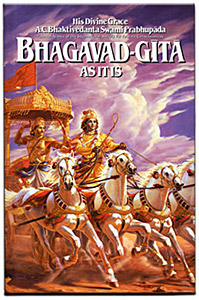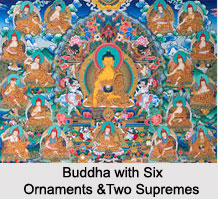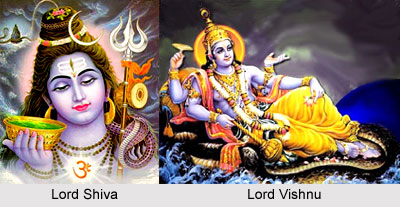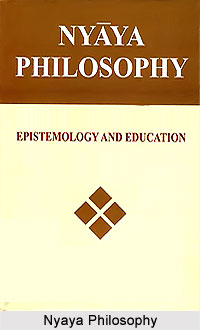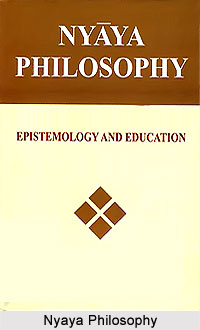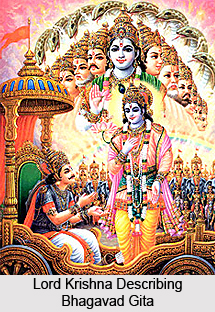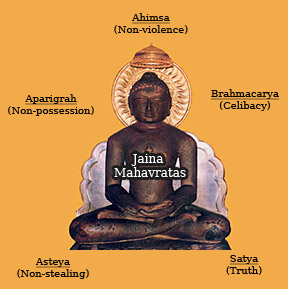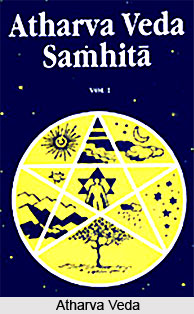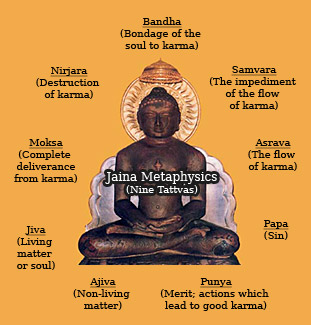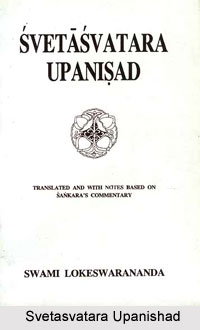 Svetasvatara Upanishad is a post-Buddhist Upanishad, since it is familiar with the technical terms of the Samkhya and the Yoga philosophies. It mentions the name of Kapila, though Samkara believes that the name refers to Hiranyagarbha, who is brown or gold coloured. The reference to the she-goat of three colours is sometimes taken as an indication of the three Gunas of the Samkhya Philosophy. But Samkara interprets it as a reference to the three original elements of the Upanishads, fire, water and earth. Chapter two of the Upanishad is full of references to the Yoga system. The word "linga" is used perhaps in the sense of Nyaya Philosophy. This Upanishad seems to assume knowledge of Buddhistic speculations such as those of time (kala), nature (svabhava), or succession of works (karma), or chance, or elements, or Purusa. In speaking of the highest reality the Upanishad uses such names as Hara, Rudra, and Lord Shiva. The popular god of Brahmanism is given the attributes of Brahman.
Svetasvatara Upanishad is a post-Buddhist Upanishad, since it is familiar with the technical terms of the Samkhya and the Yoga philosophies. It mentions the name of Kapila, though Samkara believes that the name refers to Hiranyagarbha, who is brown or gold coloured. The reference to the she-goat of three colours is sometimes taken as an indication of the three Gunas of the Samkhya Philosophy. But Samkara interprets it as a reference to the three original elements of the Upanishads, fire, water and earth. Chapter two of the Upanishad is full of references to the Yoga system. The word "linga" is used perhaps in the sense of Nyaya Philosophy. This Upanishad seems to assume knowledge of Buddhistic speculations such as those of time (kala), nature (svabhava), or succession of works (karma), or chance, or elements, or Purusa. In speaking of the highest reality the Upanishad uses such names as Hara, Rudra, and Lord Shiva. The popular god of Brahmanism is given the attributes of Brahman.
The Svetasvatara Upanishad repudiates the theory of naturalism, which makes svabhava the cause of the universe. The latter theory believes that the universe is produced and sustained by the natural and necessary action of substances according to their own properties. On such a view there would be no need for a supreme being.
The reality of God cannot be proved by logic. It can only be realised by faith and meditation. When absorbed in this concentration the yogi sees by the true nature of his own self, which manifests like a light the true nature of Brahman, which is unborn, eternal, free from all effects of nature, he gets released from all bonds. He has no visible form no one sees Him with the eye. Those who know Him by the heart and understanding, as seated in the heart, become immortal. He is the master of nature and soul, the cause of bondage and release, the eternal of all things; the self-born. Divine immanence is also admitted. He is the dweller in the heart of man concealed in all beings.
The Upanishad is aware of the reality of the impersonal Brahman, of which the three tendencies or developments are God, world and self. Where there is no darkness, there is neither day nor night; neither existence nor non-existence, there is the all-blessed even alone. He is called "Nirguna", though theistic interpreters say that this word means that the Supreme is devoid of evil qualities. There is no doubt that the Svetasvatara admits the reality of a supreme Brahman above the changing world, beyond space, imperturbable, free from change becoming and causality. It is the pure basic consciousness by the light of which everything shines, and is described as "without parts, without action, without faults, without ignorance or misery". From this Supreme three unborn elements precede, the all-knowing God, the imperfect self, and the world of prakrti, which has in it the materials of enjoyment and suffering. These three are not ultimately different. They are three aspects of the one Brahman. The absolute of the Upanishads becomes the highest element, an individual among individuals. The personal Lord is the composite Brahman, the eternal support of Jiva and matter.
The Svetasvatara identifies the two, the personal and the impersonal, though it makes the personal the creation of the impersonal Brahman, if such an act as creation be allowed. In relation to the world and the individuals in it, the absolute assumes personality. So long as the individual clings to his own individuality, the absolute is other and so a personal god. But when the individual surrenders his individuality, the two become one.
Being a theistic religion, the Svetasvatara draws a distinction between the worshipper and the worshipped, soul and God, though it is a distinction of degree. By meditating on God, by devoting oneself to Him, the ignorance of man is dispelled. Bhakti is inculcated and the grace of God is said to be the cause of the freedom of man. But God is not capricious and in granting His favours is guided by certain principles. The doctrine of prapatti, or self-surrender, is suggested. There is an appearance of conflict between meditation and worship. This absolute Brahman should be thought as eternal and as always in one`s own soul, for beside Him there is nothing to be known; knowing the individual soul as the enjoyer, the objects ,of enjoyment, and dispenser, all these three even as Brahman, he obtains liberation.
The Svetasvatara Upanishad concludes saying that the soul after death has to take one of the three paths: that of the gods acquired by knowledge that of the fathers acquired by good Karma, and the lower one on which the evildoers traverse. Individuals are released from all bonds when they know the Creator. Till then, they shall have to assume various bodily forms in accordance with the nature of their desires. In this wheel of Brahma (Brahma-chakra), which is the support as well as the end of all beings, which is infinite, roams about the pilgrim soul when it fancies itself and the supreme Ruler different; it obtains immortality when it is uplifted by Him.


